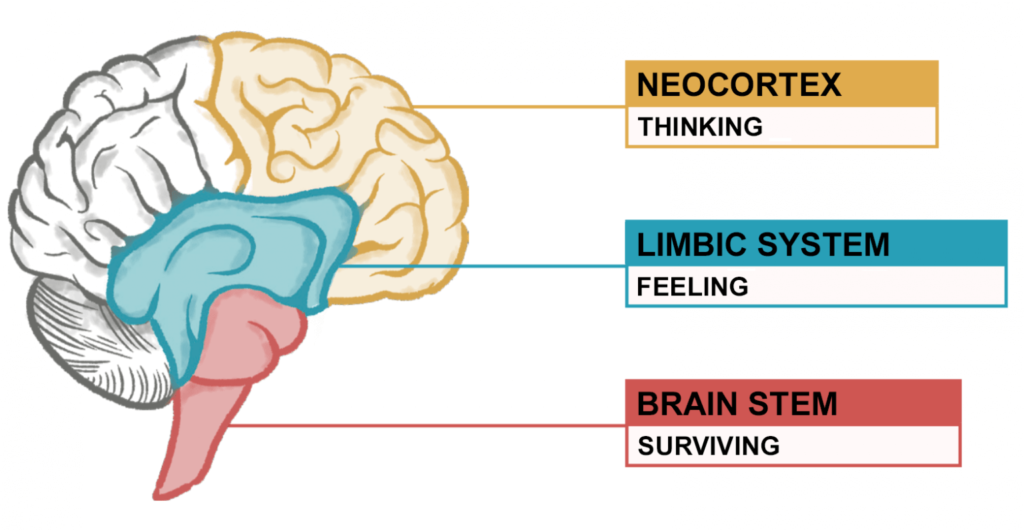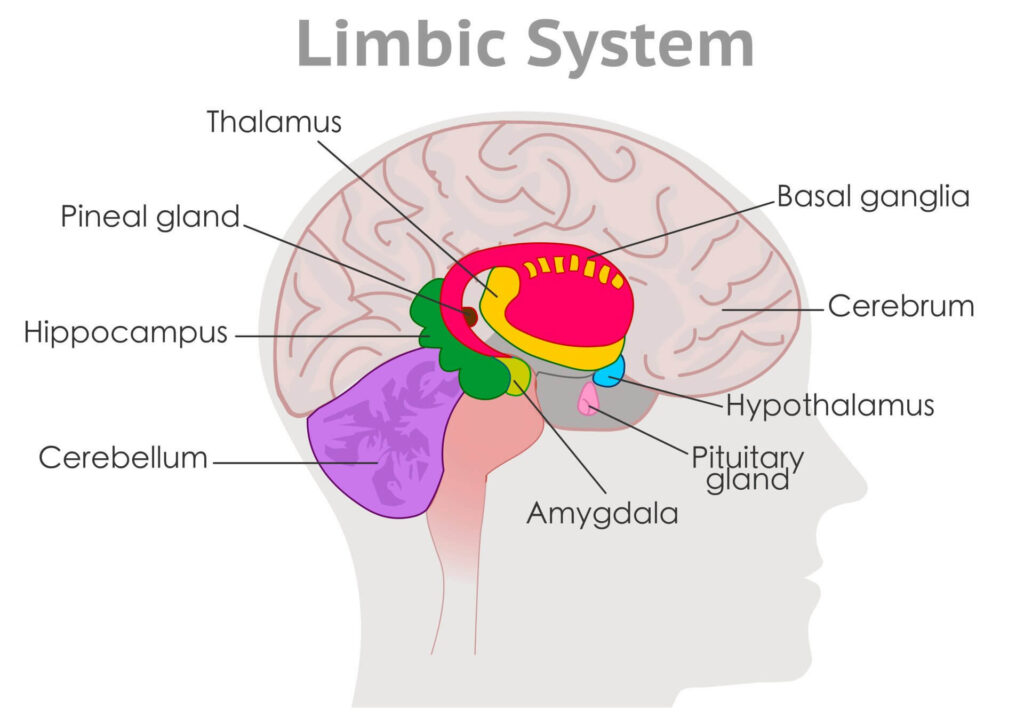This website uses cookies so that we can provide you with the best user experience possible. Cookie information is stored in your browser and performs functions such as recognising you when you return to our website and helping our team to understand which sections of the website you find most interesting and useful.
What is Trauma (Pt. 7) – in Your Brain & Body (1 of 3)

Today I’m talking about how trauma wires into your brain and body. Specifically, about your survival brain and the changes that happen that leave you with triggers.
Laura
- March 26, 2024
Today we’re continuing our series on Trauma, by starting our discussion on the science of how trauma wires into your brain and body. Specifically, we’re talking about your survival brain and the changes that happen that leave you with triggers.
This series is here to help you understand what trauma is, what the signs and symptoms are, and how and why God created you in a way that includes trauma. We’ll cover the basics of this mental health dysfunction, all the way into some of the science of how it wires into your memories and nervous system. This will give you the foundation for understanding how to heal any trauma you may be carrying. Because trauma is one of the main causes of stress in life as a human.
This is the 7th in a series of 10 posts called “What is Trauma”. Learning about trauma can be overwhelming and even triggering. I encourage you to go slow, letting God lead you to where He needs you right now. And if at any point your get triggered and need help, there are free and paid resources linked at the bottom of each post. They’ll help you out of those triggers, back into the state of peace in your mind and body. You deserve that, so don’t shy away from help if you need it. I’m praying for you.
How Trauma Wires into Your Brain & Body
Today I’m starting our discussion on the science of how trauma wires into your brain and body. Specifically, I’m talking about your survival brain (also known as your limbic system), and how it changes with trauma (in a way that leaves you with triggers).
If you missed the previous posts, I introduced what trauma is, what the 5 different types of trauma are (Acute, Chronic, and Secondary, and Developmental, Complex and Complex PTSD). As well as what the signs and symptoms of trauma are (the main types, dissociation, and ACEs). These are great introductions into trauma and the symptoms we’re going to talk about today.
How God Designed Your Brain
To understand how trauma wires into your brain, you first need to understand how God designed your brain.
3 Main Parts
Your brain has 3 main parts:

Your brain stem (also known as your “reptilian brain”) is the part of your brain responsible for your survival. It controls your breathing, heart rate, survival mode responses (fight, flight, freeze), and all of your automatic functions that keep you alive.
Your limbic system (also known as your “mammalian brain”) is the part of your brain responsible for your emotional things. It controls your emotions, memory, imagination, dreams, rewards, pleasure and pain, and safety.
Your neocortex (also known as your “human brain”) is the part of your brain responsible for your cognitive thought. It controls your logic, reasoning, self-awareness, analysis and planning.
Your Survival Brain
Your brain stem and limbic system make up your survival brain, which are the parts of your brain responsible for survival mode (fight, flight, freeze). It’s your limbic system that’s impacted by and changed with trauma.
Your brain stem is what connects your brain to your body, both physically and psychologically. It helps communicate the signals of safety or danger to the rest of your body, via your nervous system.
Your limbic system is made up of 9 different parts, with your amygdala and hippocampus being 2 of the main parts responsible for your trauma.

YOUR AMYGDALA
Your amygdala is like your watchman on the wall. It’s the part of your brain responsible for scanning your surroundings and determining if you’re safe or not.
When it senses you’re safe, it sends signals of safety to the rest of your brain, telling it that you can remain at peace (the state of rest & digest).
When it senses you’re in danger, it sends signals of danger to the rest of your brain, telling it that you need to shift into survival mode (fight, flight, freeze) to save your life.
Your amygdala works in tandem with your hippocampus to understand what’s safe or not.
YOUR HIPPOCAMPUS
Your hippocampus is like your recording secretary. It’s the part of your brain responsible for recording and maintaining the information about safety and danger. This includes a list of what is dangerous in life.
God designed you with a list of dangerous things already built into your hippocampus (like standing at the edge of the Grand Canyon, or being chased by a wild animal). He knew you’d need it to help you survive the dangers of life.
He also designed your hippocampus to add things to this list, whenever you encounter dangerous things in the future (like a car accident, or an abuser).
This “danger list” is the information your amygdala is reviewing when it’s scanning your surroundings for safety or danger. It’s constantly checking the list to see how it should react to the world around you.
When it senses that nothing on the danger list is present, it sends signals of safety to the rest of your brain (and body). This shifts you into the state of peace (rest & digest), so that you can thrive in your life.
When it senses that something on the danger list is present, it sends signals of danger to the rest of your brain (and body). This shifts you into survival mode (fight, flight, freeze), so that you can save your life.
How Trauma Changes Your Brain
When your brain traumatizes, it changes the functions of your hippocampus, including your danger list.
How Your Hippocampus Stores Memories
We’ll talk deeper about memories in the next post, but for now, here’s the basics of what a memory is.
A memory is a collection of sensory details, from your surroundings, during the time in your life that the memory is about. This includes everything you see, smell, hear, taste and touch or feel in those moments. All of these sensory details make up the movie in your brain that we call a memory.
Your limbic system is the part of your brain doing the recording of all of these sensory details, especially your hippocampus. As your recording secretary, it’s categorizing all of the information coming in, and filing it away in your long term storage, called memories.
When you’re in danger and your brain is re-wiring with trauma, everything in your brain changes, including your hippocampus.
The danger list that God designed you with from the beginning, gets added to. All of the sensory details in your environment (from the time you’re in danger), get added to your danger list. This helps you avoid them in the future, if you encounter them again.
Many believe that this only includes the dangerous thing (like a dog bite). But in reality, your brain records every sensory detail (including the orange hat you’re looking at when the dog bites you).
This is God’s design to help you stay alive in life.
God knew that the things in your external environment may actually relate to the danger itself. If the dog’s owner is wearing the orange hat, you’ll want to avoid that orange hat in the future.
Unfortunately, God didn’t design your brain to know the difference between important details and background non-essentials. He designed it to err on the side of caution, and record everything. Because you never know how something seemingly unrelated in the background, is actually related to the danger itself.
What This Means For You
What this means for you and your trauma, is that your danger list, is now exponentially longer. Every time you traumatize, it adds both the dangerous thing you just lived through (like a dog bite), along with every sensory detail in your surroundings (like the color orange, hats, an orange hat, etc).
Those details on your danger list aren’t lumped together in 1 collective “dangerous thing” category. They’re each an individual item, that your brain now perceives as dangerous.
Meaning, when you encounter any of them again in the future, your amygdala will see them as dangerous. It will send out the danger signals to your brain and body, and shift you into survival mode (fight, flight, freeze), even if it’s just an orange hat you’re seeing.
This is what we call a trigger.
Clinically, it’s called Post-traumatic stress. It’s the stress activation of your nervous system, post-trauma.
Any time your brain traumatizes, your danger list grows to include everything you just encountered. The more trauma you have, the more items you have on your danger list. The more things your brain thinks are dangerous. The more you get triggered (into survival mode to save your life).
Healing Is Possible
While this can be really disheartening and overwhelming to learn about, I want you to remember that healing is always possible.
Mental health knows how to heal trauma (of all levels).
No amount of trauma you’re carrying has to be forever. When you heal your trauma, those unnecessary items get removed from your danger list, and there will be nothing to trigger you any longer.
This is mental and emotional freedom.
Real stress release.
How Trauma Changes Your Memories & Belief Systems
In the next post, I’m continuing our discussion on how trauma stores in your brain and body, by talking more about memories and how they change with trauma. I’ll also be talking about how your belief systems change with trauma.
Do You Have Trauma and Need Help with Your Triggers?
If you’re struggling with trauma triggers and life-altering effects they bring, I have resources for you.
While I always encourage healing in 1-on-1 sessions with a therapist or trauma coach, you’re also going to need help in between those sessions.
Here is a free video of one of my favorite mental health techniques for turning off trauma triggers. It’s a quick 5 minute exercise that will shift you back into the state of peace in your mind and body.
I also have a full Membership of videos and audios (just like the free one) to help you turn off your triggers anytime, anywhere. Some are short exercises to turn off your triggers quickly so you can get back to your life, while others are longer opportunities to turn off your triggers and release the hard emotions that came with them.
You deserve to live and thrive in the state of peace in your mind and body. And God wants that for you.
If you’re struggling with trauma and the damaging effects of it, know that it’s not only ok to get help. It’s beautiful.
From one survivor of this hard life to another,
I’m praying for you ♥︎
– L aura
Related Posts
Want Laura On Your Blog?
Ready to Find Peace in Your Mind and Body?
Join the
Stress Release
for Christian Women Newsletter
mental health resources and encouragement for turning off your stress, releasing your emotions and coming back to the state of peace in your mind and body.




